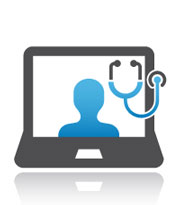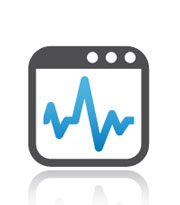Telehealth, as a modality of delivering healthcare services, is growing in terms of acceptance and adoption. There are a few key drivers for this dynamic: (1) consumer demand for convenient access to care; (2) availability of lower-cost telehealth technologies; (3) clinician comfort and willingness to provide certain services remotely; and (4) evolving payment models that seek to incentivize value and better population health.
Evolving payment models reflect the need to mitigate perverse incentives for the unnecessary healthcare utilization, waste, and inefficiencies inherent in a volume-based payment system such as fee-for-service Medicare. Both private and public sector purchasers, such as Medicare, state Medicaid programs, and employers, are in the midst of testing and scaling alternative value-based models. Even though the current administration is scaling back on mandatory alternative payment models, voluntary initiatives are still underway and being expanded.1 Under these payment models, there are opportunities for telehealth adoption to the extent it encourages efficiencies in the system. Examples include:
Next Generation Accountable Care Organization (ACO) initiative: Allows participants to take on greater financial risk, as well as potential savings, than those in current Medicare ACO initiatives. Next Generation ACOs agree to be accountable for beneficiaries assigned to them and meet certain quality targets.
- Implications for telehealth: There are currently 44 Next Generation ACOs across the U.S. Next Generation ACOs have the flexibility to waive “originating site” coverage restrictions as well as the requirement that beneficiaries be located in rural areas for telehealth services. For example, Medicare's originating site restrictions require that beneficiaries be located at specific settings, such as rural health centers, critical access hospitals, or a physician’s offices when receiving telehealth services. The telehealth waiver gives Next Generation ACOs the flexibility to allow patients to be at other settings, including their homes. For the Medicare beneficiary this opens up new ways of engaging with his/her care team that do not require travel.2
Medicare Advantage Value-Based Insurance Design (VBID) Model: As of January 1, 2017, this model allows Medicare Advantage (MA) plans and Medicare Part D plans in seven states3 to test various structures of enrollee cost-sharing and plan design elements to encourage use of high-value clinical services. In 2018, an additional three states will be added to test the VBID model.4 MA-VBIDs are able to design benefits for enrollees in certain clinical categories: diabetes, congestive heart failure, chronic obstructive pulmonary disease (COPD), past stroke, hypertension, coronary artery disease, mood disorders, and combinations of these categories.5 Beginning in 2018, CMS will allow benefits design for enrollees with dementia and rheumatoid arthritis as well.6
- Implications for telehealth: Medicare Advantage plans already have the flexibility to provide coverage for telehealth services. Certain MA plans provide remote monitoring as part of chronic condition management for select conditions, such as heart failure.7 A study of 30-day readmissions among skilled home health services Medicare patients with heart failure found a 14 percentage-point reduction, 19.3% to 5.2%, in all-cause readmissions after adopting a telehealth patient monitoring and feedback program.8 MA-VBID plans opting to use plan design elements to encourage enrollee participation in chronic condition management programs have the opportunity to leverage telehealth technologies to optimize engagement in those programs. For example, remote monitoring of patients with diabetes includes electronic transmission of finger stick glucose and blood pressure readings. Patients have this data combined with web-based or mobile device-based tools to take practical steps to engage in their own care and manage their HbA1c levels. Readings from glucometers or blood pressure devices that have cause for alarm can raise flags for the care manager to contact the patient.
State Medicaid alternative payment models: A number of states are implementing alternative payment models for their Medicaid populations.
- Implications for telehealth: New Hampshire’s 1115 Demonstration Waiver includes a telehealth delivery model pilot program to improve care coordination between behavioral and medical care for individuals with mental health and substance use disorders. Compared with 2015, in 2016 New Hampshire saw a 34% reduction in substance use overdoses and fatalities as well as a $1.9 million reduction in utilization costs associated with the pilot.9 Illinois, in its waiver application, proposed using funds to develop a statewide telehealth specialty-care network to improve access to behavioral health and specialty care services in rural areas.10 Since approval of its waiver, Illinois has been working to strengthen its behavioral health workforce through increased infrastructure. Illinois hopes to decrease its ratio of inpatient to outpatient behavioral healthcare utilization and spending. California’s 1115 Waiver renewal application considers telehealth as a tool for providing a continuum of care for substance use disorder treatment.
For example, the waiver allows behavioral health outpatient services, such as intake, counseling, medication services, education, treatment planning, and crisis intervention, to be provided via telehealth.11 Texas’s 1115 waiver initiated more than 80 telehealth projects, including 24/7 crisis hotlines to extend psychiatry emergency department services; nutritional counseling; and inpatient pharmacological management.12 In addition, several states, such as California, Illinois, New Mexico, and Texas are using payment flexibility to improve access via telehealth to residents in rural communities.
Commercial ACOs:There are a variety of commercial ACO arrangements organizing health systems, physicians, and payer partners to align payments incentives with the care delivered to specific populations.
- Implications for telehealth: As with Medicare ACOs, commercial ACOs also have opportunity to leverage telehealth technologies to engage patients in self-management, improve care coordination, and reduce the risk of unnecessary, higher-cost services such as hospitalization or emergency room use. According to a 2015 survey of ACOs around the country, about 20% were using telehealth services.13 A common use case includes allowing patients with complex, multiple chronic conditions who are enrolled in a care management program to have virtual visits with a nurse care manager through a mobile device. The goal is to provide timely information to patients to better care for themselves and to deliver more efficient interventions to prevent exacerbations and further complications of chronic conditions. Catalyst Health Network, a commercial ACO in Texas, added Questcare Medical Clinics to its member network in 2015 in an effort to improve quality care, increase efficiency, and reduce healthcare costs.14 Questcare provides telehealth services across multiple disciplines, including neurology, critical care, OB/GYN, pediatrics, psychiatry, pulmonology, burn care, orthopedics, and emergency medicine.15 For example, Questcare’s teleneurology program provides on-call neurologist examinations via camera and treatment recommendations to improve continuity of care and clinical outcomes and to reduce patient facility transfers.16
Evaluations of telehealth solutions: Calibrating expectations
Cost savings and efficiency gains under alternative payment models are driven by delivery system transformation and successful population health management initiatives. Telehealth has the potential to boost the impact of population health-management initiatives while improving access and convenience of healthcare delivery.
Telehealth’s potential is not lost on investors and employers. In 2016, companies that were focused on telehealth technologies received about $287 million in venture capital funding, a substantial increase from less than $100 million in 2013.17 A recent employer survey indicated almost 64% of employers offered telehealth services in 2016, and by 2018, 92% of employers are expected to offer telehealth services to employees as a low-cost alternative to emergency room or physician office visits for nonemergency health issues.18 Additionally, almost a quarter of employers offered telehealth services for behavioral health in 2016, and by 2018 an additional 41% are expected to offer telebehavioral health services. An earlier version of the same survey found telemedicine has the potential to deliver close to $6 billion in savings to U.S. companies.19
Such high expectations must be calibrated. To conduct appropriate return on investment (ROI) evaluations, telehealth solutions and programs should be designed to consider the purpose of the solution. In general, we think of telehealth solutions for one of three primary purposes: improve access to specialty care, support care management, or provide nonemergency acute care services.

|

|

|
|
| Purpose | Improve access to specialty care | Support care management | Provide nonemergency, acute care |
| Examples |
Patient at rural health center has video visit with remote ophthalmologist Patient has in-home video visit with remote psychiatrist |
Patient with CHF uses in-home scale, blood pressure monitor, and pulse oximeter that feeds data to remote care manager Diabetic patient uses glucometer that sends data feeds to care manager |
Employee with UTI has a video visit with a physician and receives prescription for ciprofloxacin Parent with child having acute sinusitis has video visit with nurse practitioner and receives prescription for fluticasone and OTC remedies |
| Evaluating ROI |
|
|
|
For example, a telehealth program designed to increase access to behavioral health should be expected to increase the total use and costs of behavioral healthcare services delivered to a given population. However, a robust evaluation of the potential return on investment should consider the total cost of care for healthcare services provided to a given population, including those which may have been avoided.
Studies assessing the impact of telehealth solutions designed to support care management functions such as post-discharge mobile device tools, wearables, or devices for home monitoring, should consider the chronic condition or care management program these technologies are intended to support. Robust evaluations should consider the care management program’s effects on the utilization and costs associated with the target population.
By design, telehealth programs intended to provide convenient access to a limited set of nonemergency, acute care services are expected to increase the use of those services. Vendors such as Teledoc, American Well, and Doctors on Demand typically offer 24/7 video visits for common symptoms that may require consultation with an advance care practitioner or a physician. Examples include urinary tract infections (UTIs), skin issues and rashes, diarrhea and vomiting, and cold and flu symptoms such as sinusitis, or bronchitis. These services are not designed to substitute for an ongoing relationship with patients’ primary care providers but rather to provide an alternative to urgent care or emergency department visits for nonemergency conditions. Robust evaluations of the potential return on investment should consider whether telehealth services merely drive up total use and cost of healthcare for a given population, or whether they successfully replace other, more costly services such as emergency care or urgent care visits. A recent study evaluating patterns of utilization and spending among patients with commercial insurance and acute respiratory illness found a relatively small proportion (12%) of telehealth visits were substitutes for face-to-face visits, and approximately 88% of telehealth visits were new utilization, with a resulting $45 annual increase in healthcare spending per telehealth user.20
Health insurers, purchasers, and investors will look to properly designed evaluations to assess return on investment and metrics related to utilization, costs, access, and quality of care.
1Centers for Medicare and Medicaid Services. (August 15, 2017). CMS proposes changes to the Comprehensive Care for Joint Replacement Model, cancellation of the mandatory Episode Payment Models and Cardiac Rehabilitation Inventive Payment Model. Centers for Medicare and Medicaid Services.
2Centers for Medicare and Medicaid Services. (May, 2017). Next Generation ACO Model Telehealth Waiver. Center for Medicare and Medicaid Innovation.
3Arizona, Indiana, Iowa, Massachusetts, Oregon, Pennsylvania, and Tennessee.
5Centers for Medicare and Medicaid Services (October 9, 2015). Medicare Advantage Value-Based Insurance Design Model: Request for Applications. Center for Medicare and Medicaid Innovation.
6Centers for Medicare and Medicaid Services (February 15, 2017). Medicare Advantage Value-Based Insurance Design Model. Center for Medicare and Medicaid Innovation.
7Maeng, D.D., et al. (2014). Can telemonitoring reduce hospitalization and cost of care? A health plan’s experience in managing patients with heart failure. Population Health Management. DOI: 10.1089/pop.2013.0107.
8O-Connor, M., Asdornwisd, U., Dempsey, M., et al. (2016). Using telehealth to reduce all-cause 30-day hospital readmissions among heart failure patients receiving skilled home health services. Applied Clinical Informatics. 238-247.
9Landi, H. (April 12, 2017). New Hampshire care coordination pilot program reduces overdoses by 34 percent. Healthcare Informatics.
10Illinois Department of Healthcare and Family Services (June 4, 2014). The Path to Transformation: Illinois 1115 Waiver Proposal.
11Centers for Medicare & Medicaid Services. (June 1, 2017). California Medi-Cal 2020 Demonstration. Baltimore, MD.
12Zalkovsky, E. (June 16, 2016). Presentation to the Senate Committee on Health & Human Services: Teleservices in Medicaid. Texas Health and Human Services Commission.
13eHealth Initiatives and Premier, Inc. (October 9, 2015). 2015 ACO Survey Results Webinar.
14Catalyst Health Network. (2015, February 11). Catalyst Health Network adds Questcare Medical Services, expands across Dallas-Fort Worth. Retrieved from catalyst health network: http://www.catalysthealthnetwork.com/news/catalyst-health-network-adds-questcare-medical-services-expands-across-dallas-%C2%AD%E2%80%90fort-worth
15QUESTCARE Telehealth. (2017). Overview. Retrieved from QUESTCARE Telehealth: http://questcaretelehealth.com/about/overview/
16QUESTCARE Telehealth. (2017). Tele-Neurology. Retrieved from QUESTCARE Telehealth: http://questcaretelehealth.com/wp-content/uploads/2017/04/QuestcareTelehealthATAFlyers.pdf
17Tecco, H. (2017). 2016 Year end funding: A reality check for digital health. Rock Health.
18Willis Towers Watson. (2016). High-performance insights - best practices in healthcare, 2016 21st Annual Willis Towers Watson Best Practices in Health Care Employer Survey. Willis Towers Watson.
19National Business Group on Health/Towers Watson. (2014). The new health care imperative: Driving performance, connecting to value: Employers Survey on Purchasing Value in Health Care. Towers Watson.
20Ashwood, S., Mehrotra, A., Cowling, D., Uscher-Pines, L. (2017). Direct-to-consumer telehealth may increase access to care but does not decrease spending. Commercial Insurer Innovation. 485-491.